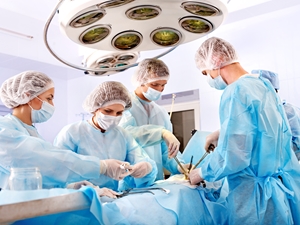|
 Successful surgery depends on optimizing working conditions for medical professionals and patients. Temperatures in operating rooms are often colder than many indoor locations, but people may not know why. However, the temperature range can have a significant effect on patient health and safety. Successful surgery depends on optimizing working conditions for medical professionals and patients. Temperatures in operating rooms are often colder than many indoor locations, but people may not know why. However, the temperature range can have a significant effect on patient health and safety.
The American Society of Heating, Refrigeration, and Air-Conditioning Engineers recommends that operating room temperatures be kept between 66 to 68 degrees Fahrenheit, with a humidity percentage of 70. While this may seem a bit chilly for a room that usually requires patients to wear a thin paper gown, health and safety take precedence over their comfort in such a case.
'Raining' in the operating room
One reason to maintain such a temperature range is to prevent the buildup of humidity in the operating room. When the space is kept too warm, condensation can collect on surfaces, including the room's ceiling and various operating equipment. In addition to making the room uncomfortable, this condensation buildup can pose serious risks to patient health.
If this moisture is left to collect and not prevented through temperature monitoring, it can build up to the point that it falls from these surfaces. It is possible, and dangerous, for this condensation to fall onto sterilized surfaces, operating tools or possibly into an open wound. As moisture moves along these surfaces, it can pick up additional bacteria that can seriously infect a patient. In order to prevent the buildup of these droplets, the operating room should be equipped with a temperature sensor and monitoring system for maintaining the recommended range.
Hospital personnel comfort
Operating rooms are also kept cool to ensure that the doctors and nurses working on the patient do not sweat. Although anesthesiologist resource Great Z's stated that many hospital personnel would not reveal this reason to patients, the source does point out that operating requires a lot of heat producing equipment. This includes large overhead lights that allow doctors to clearly see their activities. Because these systems can produce a lot of excess warmth in addition to the heat already being produced by the human body, they can cause a surgeon to sweat. This can also cause a serious health risk to the patient. Therefore, in order to prevent this and keep hospital personnel comfortable in the operating room, it is important to have a temperature monitoring system in place to ensure the space is cool.
Preventing bacteria growth while ensuring AC functionality
Similar to the case of cold temperatures for food safety, operating rooms are also kept cool to slow the rate of bacteria growth, stated Great Z's. Experts have proven that bacteria, viruses and other organisms reproduce and grow more slowly when subjected to lower temperature environments. Therefore, to fight off any infections, hospitals keep their operating rooms cooler.
Additionally, these facilities also employ temperature monitoring as a means to oversee the functionality of their AC systems. Many AC units, especially within older buildings, were not designed to consistently maintain such low temperatures. For this reason, hospitals count on their temperature monitoring systems and high temperature alarms as a means of notification if their AC fails.
|